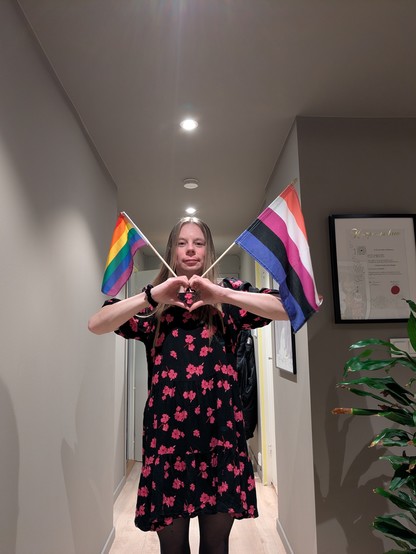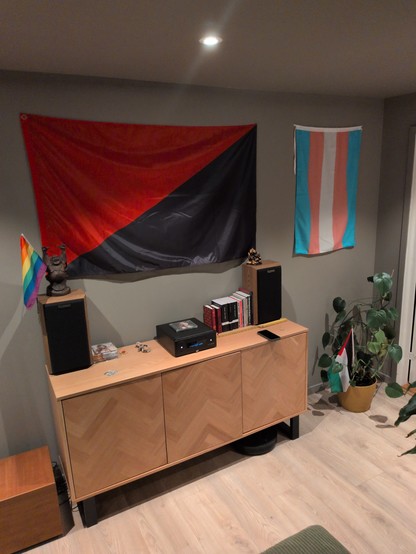2025-11-01 13:26:44
2025-12-30 19:29:31
Trans people are incredible, strong, beautiful, and absolutely bring so much love and strength to our world.
:bisexual_pride: 🏳️⚧️ :genderfluid_flag: :nonbinary_flag: :heart_trans: 🏳️🌈
I wholeheartedly, unapologetically, and forever believe that #TransRightsAreHumanRights.
Always, forever, endlessly, trans people are real, valuable, and human in every way…
2025-11-28 18:22:31
A missile screamed off the Trinidad coast, striking the vessel and igniting a blaze from bow to stern.
For minutes, commanders watched the boat burning on a live drone feed.
As the smoke cleared, they got a jolt: Two survivors were clinging to the smoldering wreck.
Hegseth's order on first Caribbean boat strike, officials say: Kill them all
The Special Operations commander overseeing the Sept. 2 attack
— the opening salvo in the Trump administration’s war on s…
2025-10-24 13:52:52
Day 28: Samira Ahmed
As foreshadowed, we're back to YA land, which represents a lot of what I've been enjoying from the library lately.
I've read "Hollow Fires", "This Book Won't Burn", and "Love, Hate, and other Filters" by Ahmed, along with "Mad, Bad, and Dangerous to Know" which is quite different. All four are teen ~romances with interesting things to say about racism & growing up as a South Asian Muslim, but whereas the first three are set in small-town Indiana, the third is set in France and includes a historical fiction angle involving Dumas and a hypothetical Muslim woman who was (in this telling) the inspiration for several Lord Byron poems.
Ahmed's novels all include a strong and overt theme of social justice, and it's refreshing to see an author not try to wade around the topic or ignore it. Her romances are complex, with imperfect protagonists and endings that aren't always "happily ever after" although they're satisfying and believable.
My library has a plethora of similar authors I've been enjoying, including Adiba Jaigirdar (who appeared earlier in this list), Sabaa Tahir ("All my Rage" is fantastic but I'm less of a fan of her fantasy stuff), Sabina Khan ("The Love and Lies of Rukhsana Ali"), and Randa Abdel-Fattah ("Does My Head Look Big In This?"; from an earlier era). Ahmed gets the spot here because I really like her politics and the way she works them into her writing. Her characters are unapologetic advocates against things like book bans, and Ahmed doesn't second-guess them or try to make things more palatable for those who want to ban books (or whatever). Her historical fiction in "Mad..." is also really cool in terms of "huh that could actually totally be true" and grappling with literary sexism from ages past.
#30AuthorsNoMen
2025-10-21 18:06:01
Hey all, there are some photos from a hike in the #schwarzwald
Actually we thought that it would just take us less than an hour - but it wasn't simply a straight walk :-D
It was raining from time to time - which was indeed pretty cool. A) there was noone around except us and B) the colors were often just insane. Fully saturated green, the brown from the wood - and sometimes…
2025-11-21 18:54:12
Any sufficiently advanced disaster preparedness is indistinguishable from revolutionary dual power. This essay is a bit of a transition between the theory I've written earlier, and more concrete plans.
Even though I only touched on my life on the commune, it was hard not to write more. These are such weird spaces, with so much invisible opportunity. But they're also just so unique and special. For all the stress and uncertainty of making sure you stayed on Lorean's (the head priestess), there were also those long summer nights with the whole community (except the old lady) gathered around a fire, talking and drinking. There was almost a child-like play to the whole time.
There were so Fridays I'd come home with a couple of gallons of beer from the real world, folks would bring things from the garden, someone would grill a steak, everyone who didn't cook would clean up, and we'd just hang out and have fun. So many evenings I'd go over to Miles place with a guitar, or with his guitar, and we'd pass it around over a few beers, talking about philosophy, Star Wars, or some book or other. It's hard not to write about the strange magic of that space.
My partner and I bonded over similar experiences, mine on a weird little religious commune in California and theirs as a temporary worker at Omega Institute. Both had exploitation, people on weird power trips, frustrating dynamics, but also a strange magic and freedom. Both were sort of fantasy worlds, but places that let us see through this one, let us imagine something that something else is possible behind the veil.
There are many such veils.
Perhaps it's fitting that this is more meandering, as a good wander can help the transition between lots of hard thinking and lots of hard working.
https://anarchoccultism.org/building-zion/evaluating-options
Editing feedback (especially typos, spelling, grammar) is always welcome, as are questions and even wider structural advice. I've been adding the handles of folks who provide feedback to the intro in a "thank you" section. If you do help and wouldn't like to be added, please let me know.
2025-10-22 12:07:45
Internal memo and a source: Meta is cutting ~600 jobs out of several thousand within its Superintelligence Lab, including in its FAIR unit, to cut bureaucracy (Ina Fried/Axios)
https://www.axios.com/2025/10/22/meta-superintelligence-tbd-ai-reorg
2025-12-18 13:46:58
@… re: #670 Overtime segment on TVs. I currently have an HD Homerun that gets a signal from an OTA antenna that works pretty good. I too use Channels ✅
One thing that rarely gets mentioned when talking about streaming sports - if you're watching live, or close to live you CANNOT skip commercials. My fav use case is to start a FB 45 min late and skip commerc…
2025-10-14 10:51:18
Anisotropic Strain Engineering in La0.7Sr0.3MnO3/LaFeO3 Superlattice: Structural Relaxation and Domain Formation
Yu Liu, Thea Marie Dale, Emma van der Minne, Susanne Boucher, Romar Avila, Christoph Klewe, Gertjan Koster, Magnus Nord, Mari-Ann Einarsrud, Ingrid Hallsteinsen
https://arxiv.org/abs/2510.10482










